The SHIO is a decent dongle DAC/amp with gain settings and dual outputs, focused on a musical signature over a sterile soundscape.
Fun fact: The Japanese word SHIO (汐) – found on the packaging – refers to “tide.”
Dongles are kind of the rage in recent months – they provide a good price-to-performance ratio on-the-go, and are generally less expensive than DAPs for equivalent sound quality. Many budget-conscious audiophiles have found dongles to be a great investment.
- Solid build, with detachable cable.
- 4.4mm (balanced) and 3.5mm (single-ended) outputs available. Low and high gain options.
- No EMI.
- Does not get hot with long listening sessions.
- Warm analogue signature, fatigue-free musical tuning.
- Natural timbre.
- May not be able to power very demanding transducers.
- Below average technicalities.
- Not dead neutral, may be too colored for purists.
- No MQA compatibility.
- 3.5mm (single-ended) output is reduced in dynamics and soundstage compared to the 4.4mm (balanced) port.
No doubt, dongles may be bottlenecked by the battery life and storage space of the smartphone it is connected to – especially if one uses many lossless files.
With dongle DAC/amps released left, right, and center, how will the SHIO fare in this big sea of choices? Will the SHIO make waves or be like a fish out of water? Time and tide wait for no audiophile, so let’s read on to find out!
Company Overview
Truthear was only conceived in 2022. Still, age is clearly not a limiting factor, as the company has hit a few home runs with the Zero (a collaboration with the famed audio reviewer Crinacle), the highly-acclaimed HEXA, and the ultra-budget HOLA.
Technical Specifications
- Form: Portable DAC/amp dongle
- Removable Cable: Y (USB-C)
- DAC Chip: Dual Cirrus Logic CS43198
- Decoding Format: PCM: 44.1kHz (16 bit) – 768kHz (32 bit), DSD 64 – 256
- Source Jack: 3.5mm single-ended and 4.4mm balanced
- Output Impedance: 3.5mm: 0.9ohm, 4.4mm: 1.22ohm
- THD+N%: 3.5mm: <0.00025%, 4.4mm: <0.0002%
- Frequency Response (Hz): 20Hz – 20kHz
- Output: 3.5mm: 1.4Vrms (low gain), 2Vrms (high gain). 4.4mm: 2Vrms (low gain), 4Vrms (high gain). 150mW x2 @32Ω, 55mW x2 @300Ω
Packaging

In the box
- Truthear SHIO dongle DAC/amp
- USB-C TO USB-C cable
- Waifu card
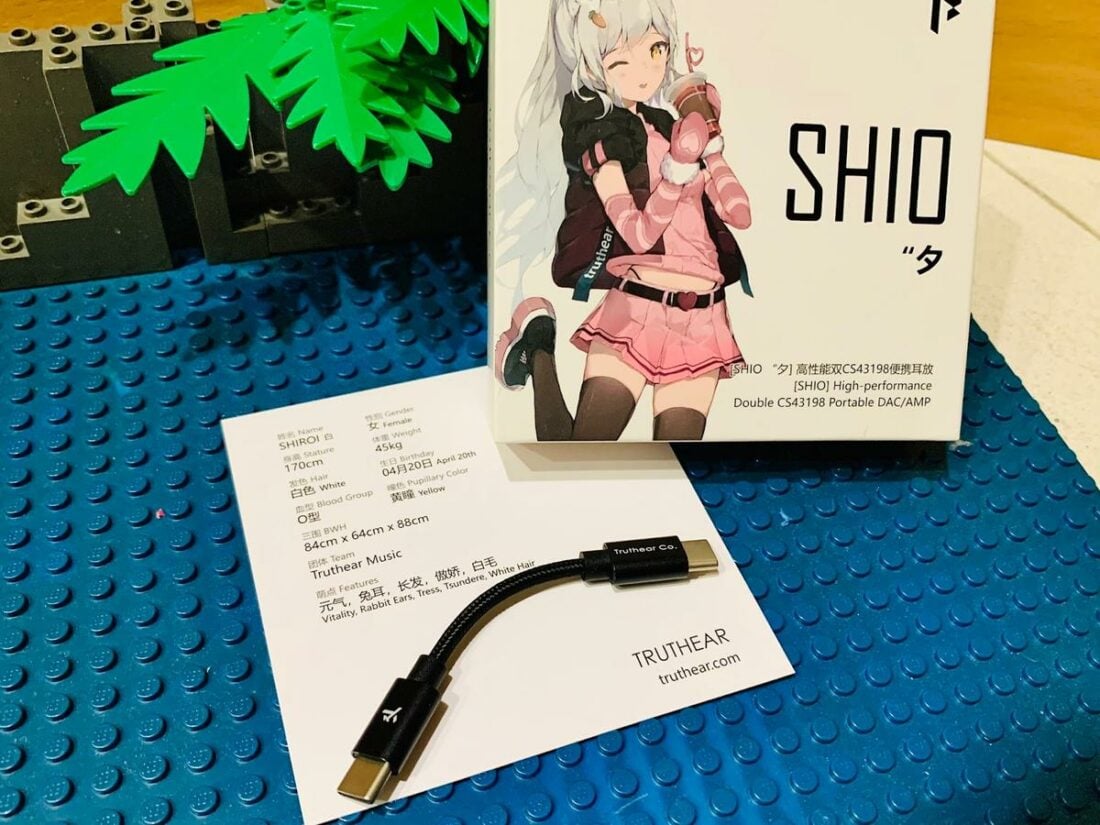
The SHIO comes packaged with a detachable, oxygen-free copper, multi-core, dual-ended USB-C OTG cable. The cable is covered with nylon mesh, which purportedly increases signal transmissibility and reinforces the build.
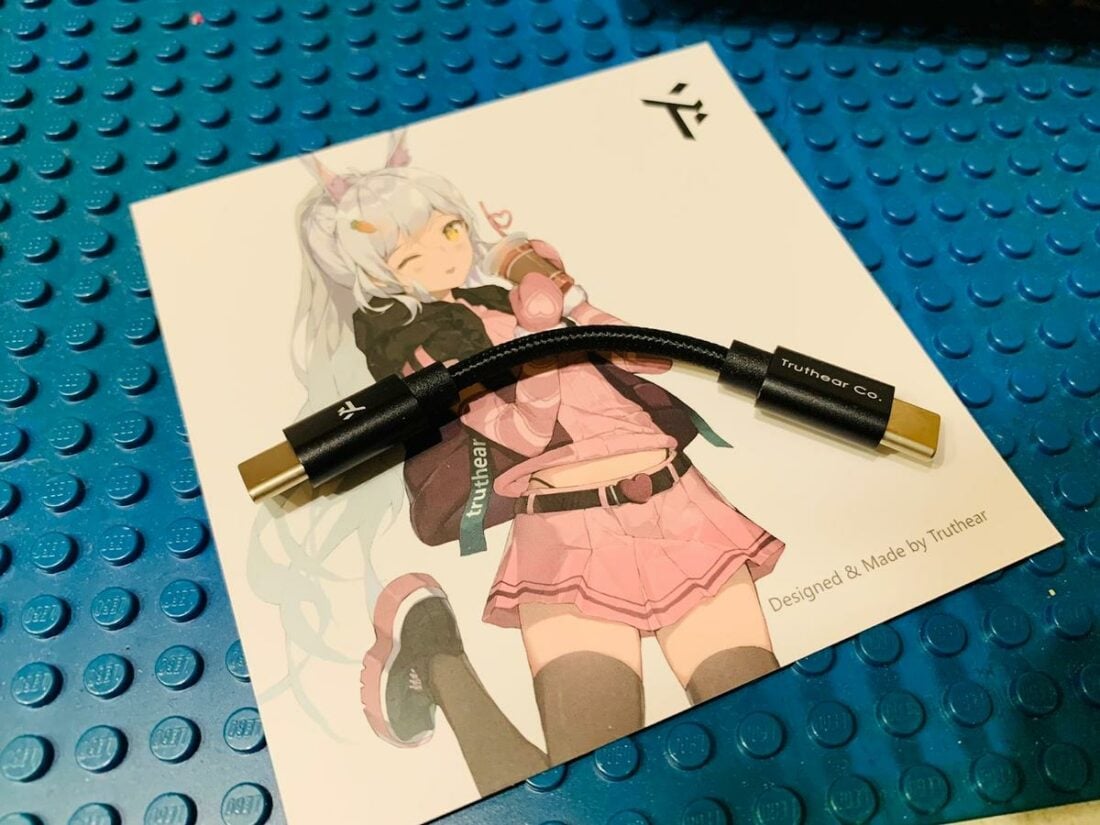
Unfortunately, Apple users will need to find an aftermarket Lightning to USB-C cable or adapter, which is not included with the accessories. Likewise, if one wants to use the SHIO with a laptop with USB-A ports, one will need to procure a USB-A to USB-C adapter.
Design/Compatibility
The SHIO is fashioned from CNC (computer numeric control) anodized metal and is wrapped in a non-removable leatherette cover, which adds a splash of elegance. Truthear has buttressed the build via glue, screws, and staples.

On one end of the dongle is a USB-C female connector, and on the opposite end lies the 3.5mm and 4.4mm outputs, making this device compatible with both single-ended and balanced headphones.
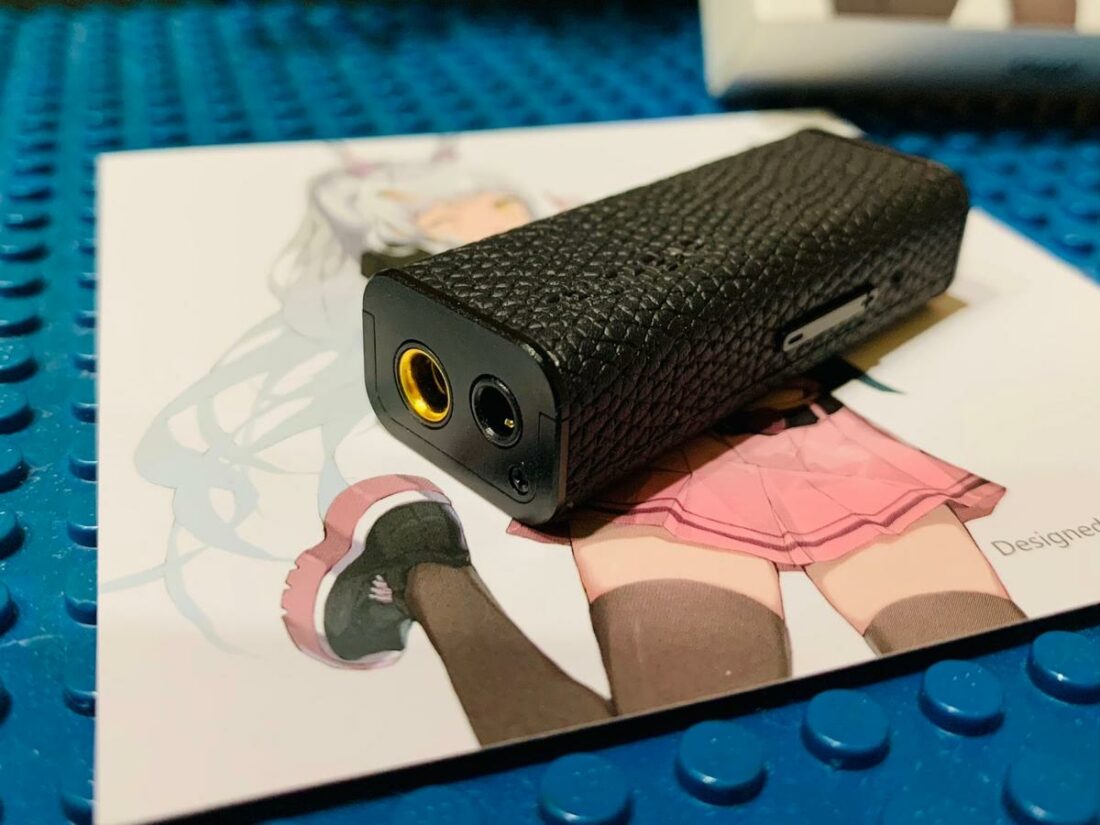
The buttons lie along the length of the fuselage. The volume steps are quite well implemented, unlike some other dongles, which do not allow precise volume control.
Pressing the “+” and “-” signs together will toggle between the high and low gain modes. The LED lights will change correspondingly:
| LED | Description |
|---|---|
| Red | Low gain, PCM |
| Yellow | High gain, PCM |
| Blue | Low gain, DSD |
| Purple | High gain, DSD |
The low gain setting is the best option for high sensitivity and low impedance gear, whereas the high gain mode is intended for more demanding transducers, such as low sensitivity/high impedance sets, especially if more headroom is desired.
Interestingly, the SHIO reverts back to low gain every time it is disconnected, which may not be a bad thing; imagine if you inadvertently leave it on high gain and accidentally damage a more sensitive driver or your ears!
One can download the latest drivers for the SHIO here.
I am not an Apple user, but I had no issues using the SHIO on Windows 10 computers and various Android phones. For those using legacy or older hardware, you may email Shenzhen Audio or ask others on forums if the SHIO is suitable, as exact specifics are not mentioned on their webpage.
This dongle can play various audio formats, from PCM 44.1kHz (16-bit) – 768kHz (32-bit) to DSD 64 – 256.
Ironically, despite being called the “tide,” the SHIO does not support TIDAL’s controversial MQA format.
Internals
The SHIO’s internal engine is a dual CS43198 DAC chipset from Cirrus logic. I believe that the DAC chip is secondary to the tuning and circuit implementation, though some would say that the different DAC chips garnish a unique sonic flavor.
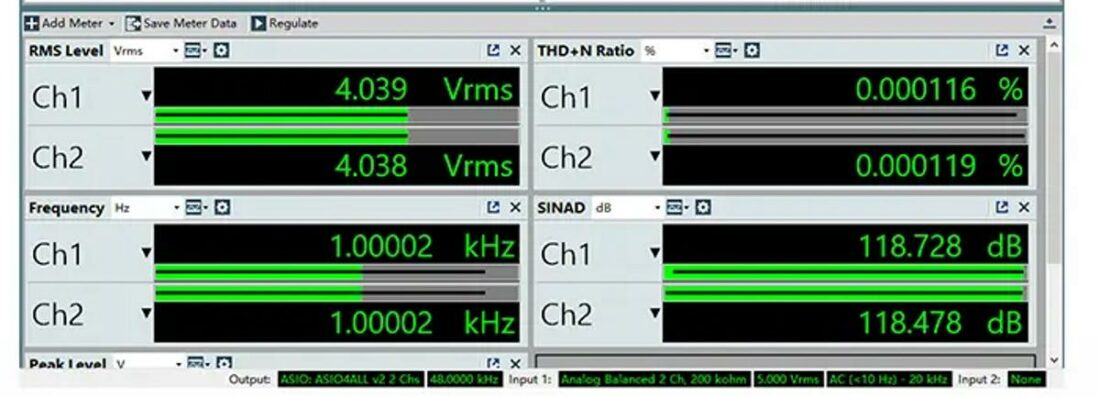
The SHIO boasts 4Vrms output on the 4.4mm (high gain) setting. It does not get hot with extended usage, even on this highest output. In contrast, the Colorfly CDA M1, a rival with a similar 4.4 mm/high gain setting, becomes far hotter with extended usage.
I didn’t find any electromagnetic interference with the Androids phones that I paired the SHIO with, which is a sign of a well-shielded design.
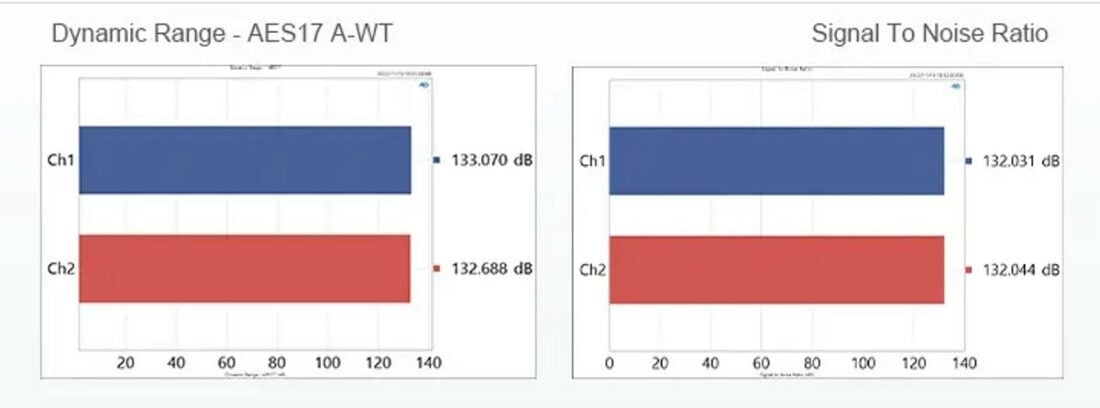
(From: https://shenzhenaudio.com/products/truthear-shio-dual-cs43198-d-a-chips-lossless-portable-dac-amplifier-dongle)
For the measurement crowd, the SHIO is marketed to have stellar objective measurements, such as a low total harmonic distortion of < 0.0002%, a high SINAD (signal-to-noise and distortion ratio) of 117dB, great dynamics of 130dB A-wt, and low background noise of < 1.6uVrms A-wt.
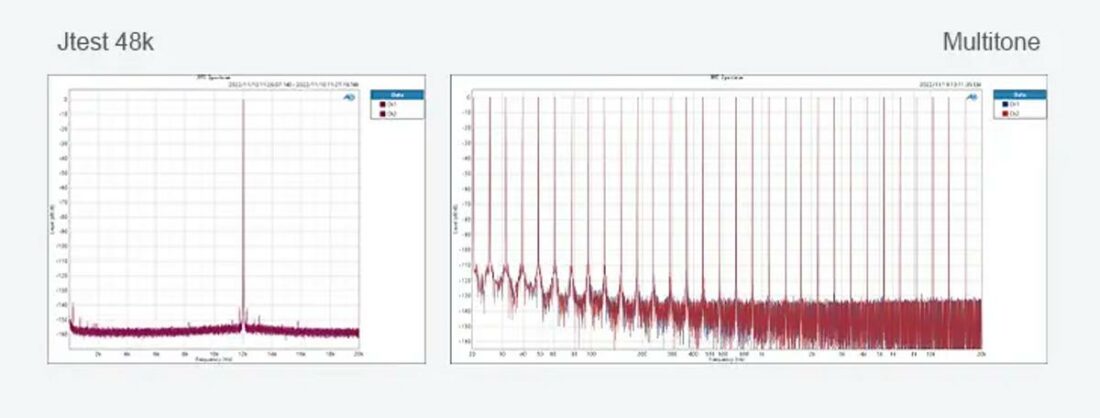
(From: https://shenzhenaudio.com/products/truthear-shio-dual-cs43198-d-a-chips-lossless-portable-dac-amplifier-dongle)
Truthear SHIO Sound
I’m glad to report that the timbre is very natural and highlights this device. Acoustic instruments and vocals are portrayed well, with good note weight.
The SHIO is a musical dongle, eschewing outright technicalities for a more laid-back and relaxing listen.
Sadly, the SHIO is at sea regarding technicalities.
Note edges are blunted, with a veil present. Imaging is blurry, and the SHIO isn’t the last word in dynamics, soundstage, or micro-details. The SHIO swims against the tide in technical performance compared to recent technical-champ dongle releases.
This dongle has a thickened and syrupy bass, which adds warmth to the lower frequencies. The bass is emphasized, and there is good sub-bass extension. Great resonance and thump are found at the mid-bass, and bassheads should be at home with the tuning.
The mid-bass bleed obscures the lower midrange. Coupled with the below-average technicalities, this affects transparency. Treble is borderline dark, and micro-details and clarity are not the focus. Conversely, there is no sibilance or fatigue, and the SHIO comes across as very placid.
The SHIO is a smooth but colored dongle.
The SHIO has no hiss with highly sensitive transducers and has a dark background on both output ports. The SHIO synergizes well with fussy low-impedance transducers (based on the rules of eights) – it does not skew the frequency response – due to its low output impedance (3.5mm: 0.9ohm, 4.4mm: 1.22ohm).
It handles most IEMs and low-demand gear easily, but the acid test comes when the SHIO faces some fickle behemoths like the infamous Final E5000 (low sensitivity) and Sennheiser HD650 (high impedance).
The E5000 has a bloated and nebulous bass when it isn’t powered well, and sadly that appears to be the case here, even on the SHIO’s balanced output and high gain setting. Likewise, the HD650 sounds tame in dynamics and boring.
Many sources with single-ended and balanced outputs within the same device seem to have the single-ended component implemented as an afterthought or at least down-throttled to some extent.
Alas, that seems to be the case here, as other than the single-ended output giving less juice, the dynamics, soundstage, and technicalities are lessened from the 3.5mm socket, even when volume matched.
The balanced output provides superior sound.
Comparisons
Between the devil and the deep blue sea: there are many fishes – sorry, dongles – in the ocean, so how does the SHIO compare against other challengers?
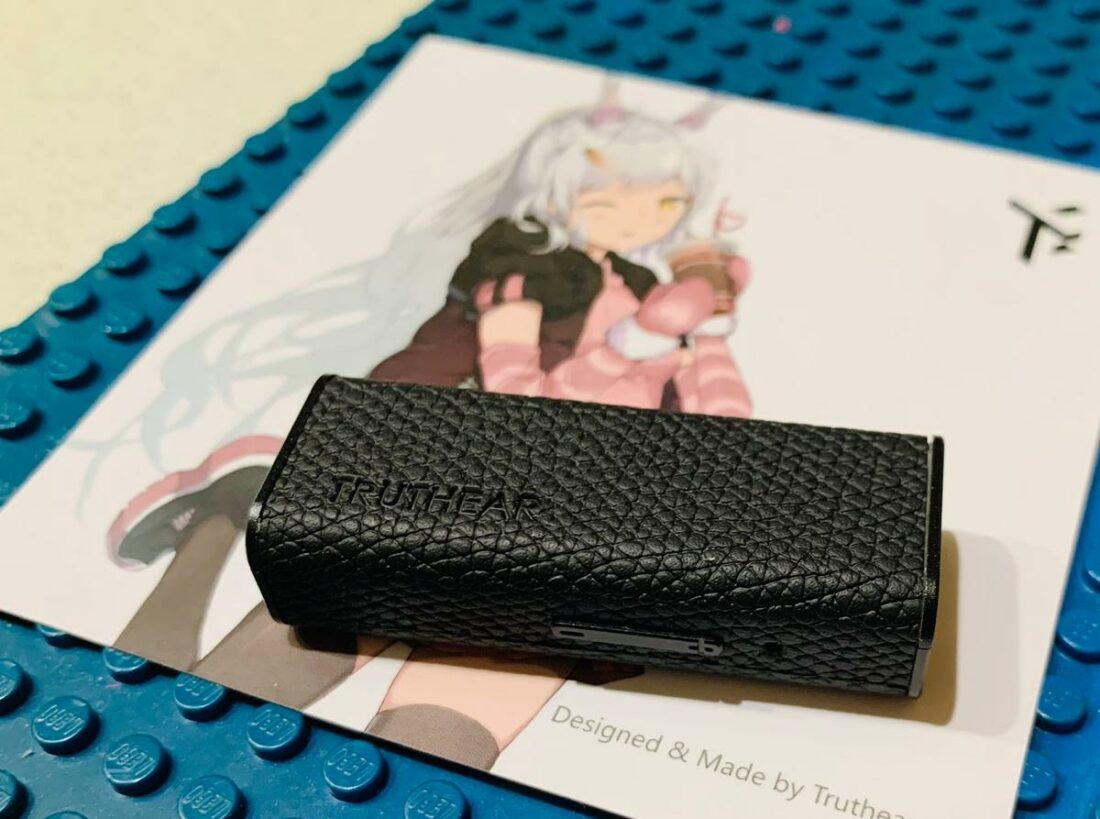
Vs. Colorfly CDA M1
The CDA M1 incorporates a customized ESS DAC chip that Colorfly calls the “α.” The CDA M1 also has gain settings and 3.5 mm/4.4 mm output options but is more neutral sounding.
The CDA M1 has a thinner note weight and isn’t as analogue sounding. On both output ports, it has superior technicalities (in soundstage, micro-detailing, imaging, and clarity) compared to the SHIO.
The CDA M1 admittedly gets quite hot during usage, but it has more power on tap to drive demanding gear.
Vs. Questyle M15
It may be an unfair comparison in terms of price, but the Questyle M15 (ESS ES9281AC DAC) and the SHIO are indeed oceans apart. The former has a wonderful timbre but is tuned dead neutral.
Also featuring different gain options and 3.5mm/4.4mm ports, the M15 operates as a current-biased amplifier (not voltage-based). The M15 maximizes current and only delivers juice when needed.
While on paper, it may seem that the M15 lags in power, on actual listening, the M15 is many leagues ahead – both in terms of technicalities and power (on both output ports). It can drive tough customers like the Final E5000 and Sennheiser HD650 with aplomb.
Vs. E1DA 9038D
The E1DA 9038D has various firmware mods available, so it may be more versatile for tinkerers – there is even a tube mode! In stock form, the E1DA 9038D sounds very neutral, analytical, and sterile.
When comparing the single-ended ports for both dongles, the E1DA 9038D has a thinner note weight, but superior technicalities, though it does get warm with usage.
Where to Buy
Conclusion
The SHIO is an option for audiophiles searching for a portable source that favors a warm chill tuning over outright technical eminence.
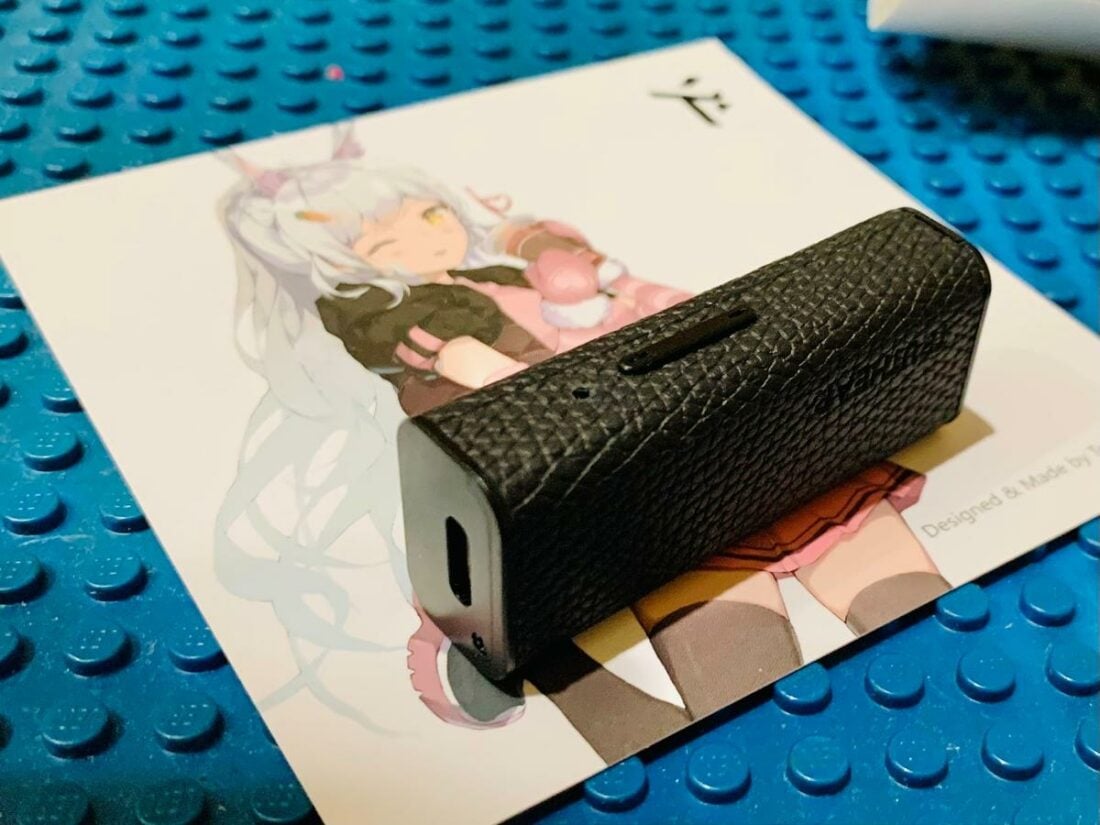
Timbre is organic, and there is no harshness. Build is decent, and it comes with a detachable cable. The SHIO doesn’t get hot during usage and has high and low gain options coupled with single-ended and balanced outputs, thus making this dongle compatible with myriad cable types.
Additionally, the dark, hiss-free background and low output impedance allow the SHIO to be paired with high sensitivity/low impedance gear.
Not everything is smooth sailing, though. The SHIO lags behind in technical chops and is also a step behind when driving very demanding gear. The SHIO may be a bit too colored for purists, what with the bass emphasis. Regrettably, the single-ended port also seems an afterthought compared to the 4.4mm output.
The SHIO does stem the tide by providing an analogue and musical signature, which is pretty different from the typical clean ESS house sound.
Verily, the SHIO lives up to its namesake of “tide,” as the sonic profile is one of a warm embracing surf that gently inundates the senses rather than a tsunami of details.
For audiophiles wanting an analogue-sounding source, the SHIO might tide those with GAS (gear acquisition syndrome) over. Well, at least until the next dongle hype-train reaches our shores.
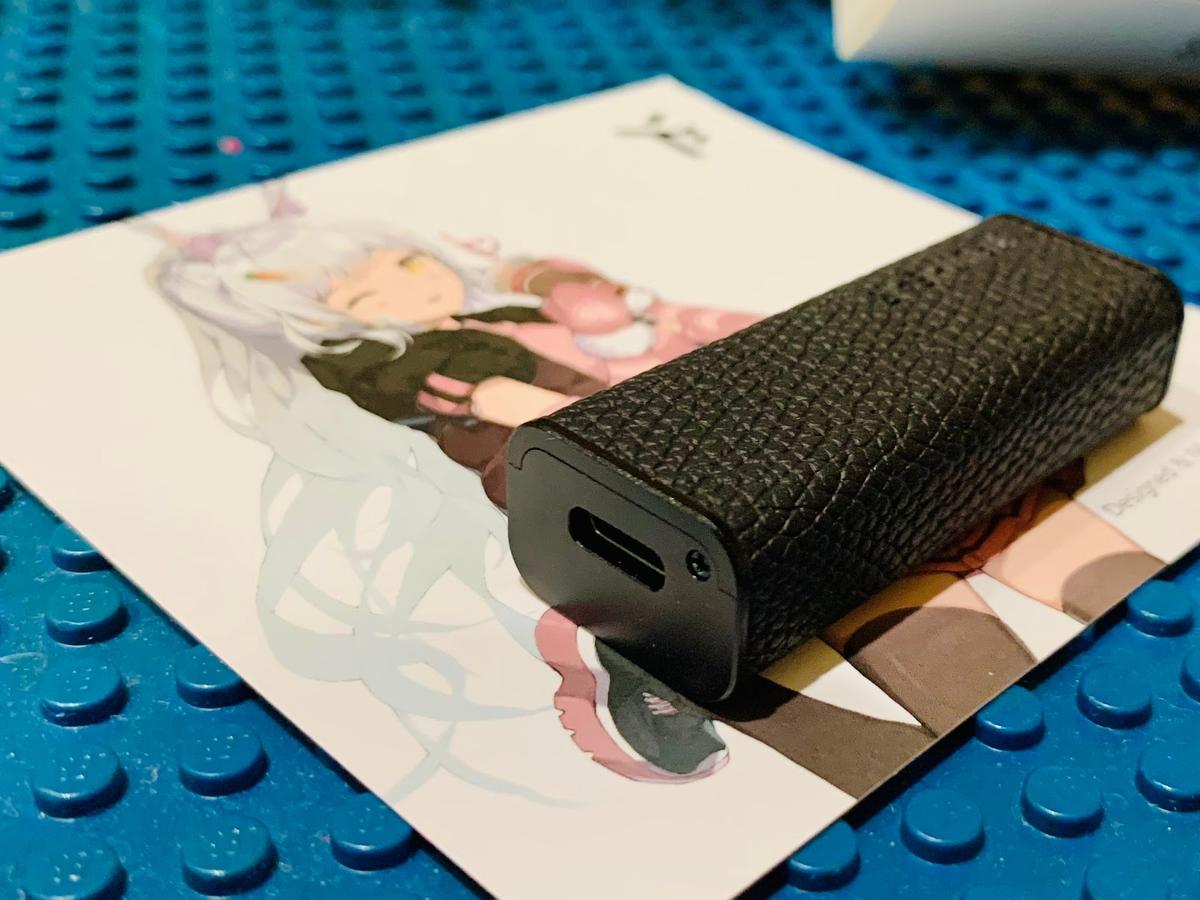
no MQA is not a cons … it’s a pros
down with the snake oil and subscription scam!
well … nonetheless if the MQA compatible device is not accompanied by an overprice (i.e.: Fiio KA1 is MQA X16 capable but not to pricey) and that … thing (to be polite ) do not force the subscription … it’s somewhat fine …
Hi Nico
Yes I agree with you that MQA is very controversial. It is not lossless but lossy, and manufacturers and consumers are forced to pay for the licensing, which adds to costs. Not a fan of it personally.
Anyway, MQA seems to be doomed: https://www.whathifi.com/news/mqa-is-going-into-administration
The Tidal CEO also says FLAC is gonna replace the controversial MQA:
https://www.reddit.com/r/TIdaL/comments/12hr68f/comment/jfuo1ng/
can you compare this to DC03 Pro? Yes, I know it’s only SE but DC03 Pro offers great setup for the price